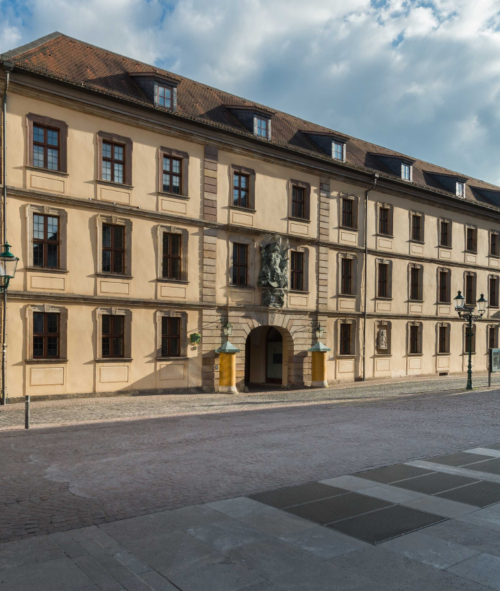Vonderau Museum
VONDERAU MUSEUM FULDA
The Vonderau Museum Fulda owes its foundation in 1875 to a private foundation. It was named after Joseph Vonderau, who as a teacher and local historian discovered numerous objects from the Stone, Bronze and Iron Ages during excavations. Today, the museum houses three permanent exhibitions with a regional focus on cultural history, natural history, painting and sculpture, as well as a planetarium. It is housed in a four-winged complex built since the late 16th century, which originally served as a papal seminary and Jesuit school. With almost 4000 m² of exhibition space
the Vonderau Museum is the largest museum between Kassel and Frankfurt, offering target group-oriented guided tours, museum talks, demonstrations and workshops. In addition, special exhibitions from all areas are presented on a regular basis.
Archaeological finds, together with models and reconstructions of burial sites, illustrate the individual cultural epochs from the Stone Age to the Iron Age. The foundation of the Benedictine monastery in 744 marks the beginning of the urban history section.
In this section the importance of the abbey, the development of the town, the secularization, the Napoleonic era and the time of belonging to the Electorate of Hesse are explained.
Among the exhibits, special mention should be made of the coin cabinet and Fulda faiences and porcelain. Four furnished rooms give an impression of the bourgeois living culture in the Baroque, Biedermeier, Historicism and Art Nouveau periods. Further exhibition topics are public life in the 19th century, textile, metal and wax production, rubber works as well as small car production (“Fulda-Mobil”) since 1949. In addition, the store furnishings of the “Drogerie zum Krokodil” from 1913 can be viewed.
Another focus of the exhibition is painting and sculpture of the Fulda area. Here, works of the court painter Johann Andreas Herrlein (1723-1796), the Rhön landscape painters since the late 19th century can be seen as well as works of the Junge Kunstkreis Fulda (JuKu), which intensively dealt with the art of post-war modernism from 1958 to 1973. A lapidarium with building ornaments, corridor monuments and gravestones is located on the first floor. In the natural history section, naturalistic dioramas provide an overview of the characteristic flora and fauna of eastern Hesse in the past and present. Geological aspects are presented with the help of models, fossils, rocks and mineral resources.
The small planetarium with 35 seats, which with its fulldome video projection is one of the most modern in Germany, complements the museum’s offerings with its regular presentations.











